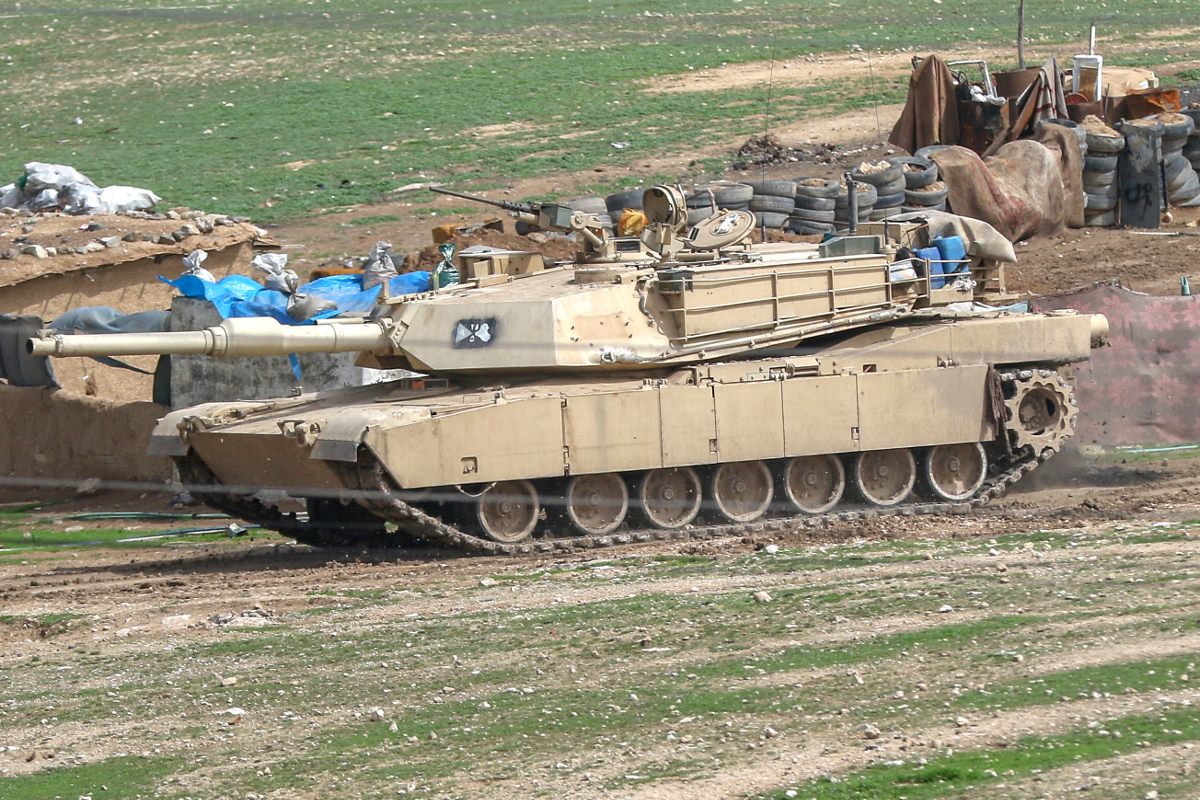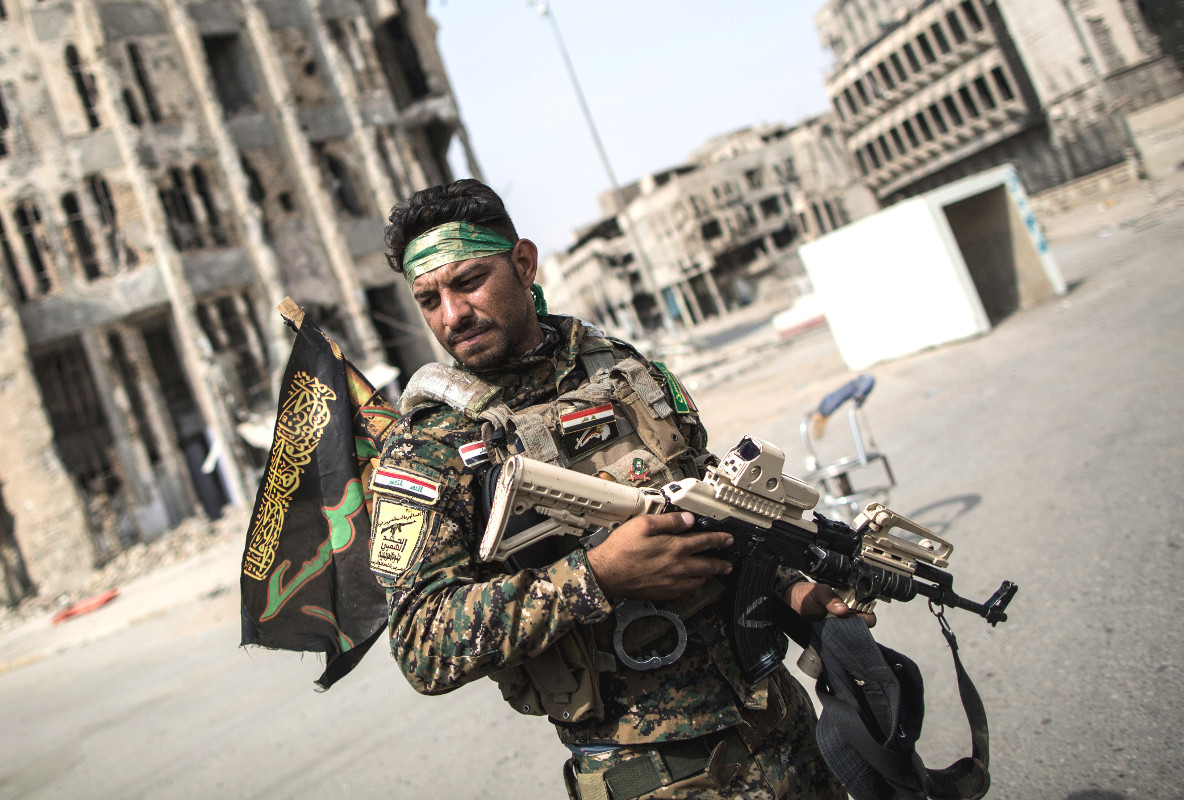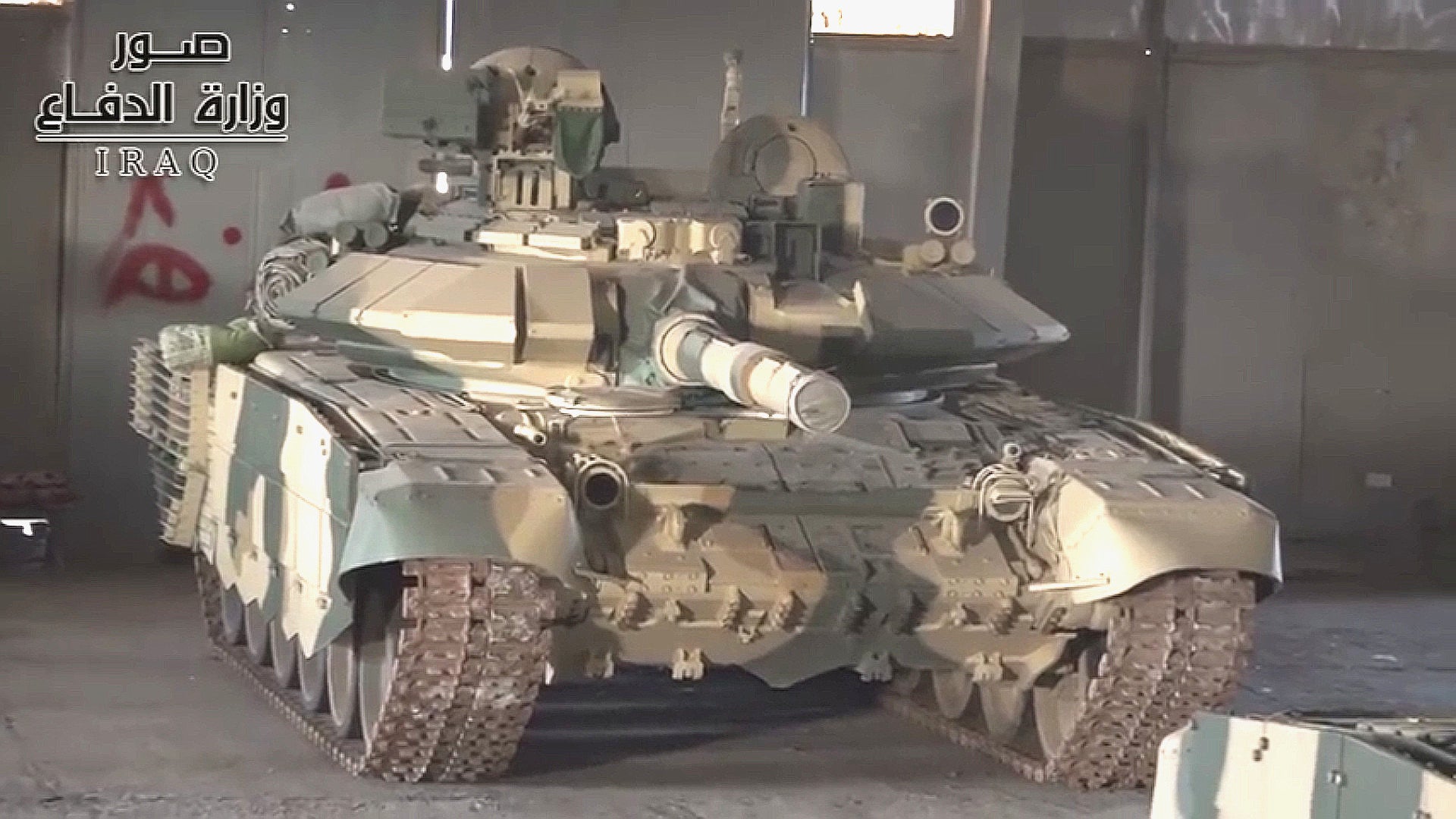With assistance from Russia, one of Iraq’s armored brigades has swapped out its American-made M1 Abrams tanks for new T-90s. The change comes after the United States complained about M1s ending up in the hands of Iranian-backed Shi’ite militias and could be another sign that the Kremlin is looking to lure Iraqi authorities into its sphere of influence.
Iraq’s Ministry of Defense announced the change on its official, Arabic-only website on June 8, 2018. According to a translation of the information by Jane’s 360, the 9th Division’s 35th Brigade took delivery of 39 T-90S tanks. The unit’s remaining Abrams went to the 34th Brigade, another one of the 9th Division’s units, which has operated M1s, as well as older Soviet-era types.
Iraqi officials added that Russian specialists had retrained the 35th Brigade’s officers and crews to operate the new tanks. They did not say whether these individuals were members of Russia’s military, employees of the manufacturer UralVagonZavod (UVZ), or private contractors.
Iraq finalized a contract with UVZ in 2016 for a total of 73 T-90S and SK tanks. The Iraqis began taking the deliveries of the first examples in February 2018.
The video below accompanied the Iraqi Ministry of Defense’s announcement that the 35th Brigade had received new T-90S tanks.

The T-90S types that Iraq has received are among the most recent iterations of the design, itself an outgrowth of the Soviet-era T-72, and appear to share some features with Russia’s newest T-90SM variants. The vehicle remains largely unchanged in terms of its basic configuration and has a modernized version of the 125mm main gun found on the original type.
The new design does have a significantly more powerful engine, giving the vehicle a top speed of nearly 40 miles an hour on roads and a range of approximately 340 miles on a single tank of gas.

The tanks also have a blend of steel and composite armor that offers improved protection over the old T-72, as well as improved fire control systems, night vision optics, and communications equipment. It’s worth noting that Iraq’s past experience with the T-72-series is, at best checkered. Those tanks were notably poor performers during both the first Gulf War in 1991 and the U.S.-led invasion of the country in 2003, but for various reasons.
The T-90SK is a variant for unit commanders, which differs only from the standard type in that it has additional radios and navigation equipment. We don’t know how many S versus SK types are in Iraq’s total order.
The video below shows dock workers loading the first batch of T-90s for Iraq onto a ship in February 2018.

Iraq’s variants of the T-90 also feature additional defense systems. These include a system that can detect laser designators and rangefinders, found on a number of modern anti-tank weapons, and alert the crew, giving them at least a chance to either maneuver behind cover or deploy a defensive smoke screen.
There is also an extensive explosive reactive armor (ERA) suite to defend against anti-tank guided missiles and other infantry anti-armor weapons, such rocket-propelled grenades. They also have slat armor screens around the engine compartment at the rear for additional protection against the latter type of threats.
ERA involves blocks of explosives positioned around the vehicle that explode outward on impact, absorbing the blast of an incoming round before it hits the actual hull of the vehicle. Slat armor either pre-detonates the projectile before it can do significant damage or physically stops it from hitting its target.

Neither of these defenses are designed to stop high-speed kinetic penetrators. And in the case of ERA arrays, each individual explosive block can only defeat one threat before it needs replacement and can potentially pose a hazard to any nearby friendly infantry or innocent bystanders. This can be a significant problem during urban operations where accompanying infantry units are essential to protecting heavy armor from getting flanked or falling victim to sudden ambushes.
But regardless of these improvements over older T-72 tanks, the 48-ton T-90s are simply not in the same class as the 70-ton Abrams. As such, the decision to refit the 35th Brigade with T-90s raises questions about whether Iraq sees the larger, more advanced M1s as being more expensive and complex to operate both practically and politically.

There is no question that the Abrams is more costly to sustain, but in 2018, they’ve also become the source of a complicated dispute with the U.S. government. Since at least 2015, there had been reports that some of the M1s, as well as other American-supplied vehicles and equipment, had found their way, either by quasi-official transfer or unofficial agreements, into the hands of Iraqi militias, such as Kata’ib Hezbollah – not to be confused with the Lebanese militant group Hezbollah – and the Badr Organization.
These Shi’ite Iraqi groups, which receive significant support from Iran, have operated under official sanction as members of the country’s Popular Mobilization Units (PMU) since 2014. In 2016, PMUs officially became part of Iraq’s armed forces.
The video below shows a column of vehicles flying Kata’ib Hezbollah flags in 2015, including M1 Abrams.

The U.S. government apparently only decided to make clear that it did not approve of the Abrams going to the PMUs sometime after October 2017. At that time, PMUs that had acquired Abrams took part in the Iraqi government’s swift and violent campaign to crush a push for independence in Iraq’s semi-autonomous Kurdish Region.
In February 2018, the U.S. military finally acknowledged publicly that the Iranian militias had gotten at least nine M1s, some of which Kurdish forces reportedly immobilized during the fighting in and around the strategic city of Kirkuk. By that time, the Pentagon insisted that the Iraqi Army had already recovered all of the tanks from the PMUs.
“We have discovered incidents where some U.S.-origin equipment, including M1 Abrams tanks, came into the possession of certain PMF groups,” Eric Pahon, a U.S. spokesperson, told Military Times on Feb. 8, 2018, using another term for PMUs. “We continue to stress to the Government of Iraq, as we do to all allies and partners, their obligation to maintain U.S.-origin equipment under the operational control of the designated end-user,” he added, stressing that the United States did not support the Iranian-linked groups.
In a report to Congress it released in May 2018, the Pentagon confirmed all of the M1s were back in the custody of the Iraqi Ministry of Defense. In addition, it noted that the U.S. military had begun requiring regular reports about the tanks and their whereabouts and had put unspecified restrictions on maintenance and other support of the vehicles in order to help ensure they didn’t find their way back to the militias.

There is no indication that Russia has put any similar restrictions on who gets the T-90s or how those units employ them. By freeing the 35th Brigade of M1s, the Iraqi government may have effectively made the unit more readily able to pursue its agendas without American interference.
This could be particularly important to the forthcoming Iraqi coalition government, which will almost certainly be led in part by a political bloc with Muqtada Al Sadr at its head. Parties aligned with Sadr’s Alliance Towards Reforms won a plurality of seats in the country’s parliamentary elections in May 2018, but not enough to form a government by themselves.
Sadr, a Shi’ite cleric and long-time Iraqi political figure, led a militia against the American-led occupation of Iraq and continued to be a major power-broker afterward. He has strong ties himself with Iran, but has also sought to develop a more diverse set of allies inside the country and out, including taking a meeting with Saudi Arabia’s powerful Crown Prince Mohammad Bin Salman.

Even before the election, the Iraqi Prime Minister Haider Abadi and his administration had maintained close connections with the regime in Tehran and had begun to signal a willingness to seek partners beyond the United States and its allies. It was Abadi’s government that signed the T-90 deal with Russia.
Under Abadi, Iraq has also purchased Mi-28NE Havoc gunship helicopters, Su-25 Frogfoot ground attack aircraft, Pantsir-S point air defense systems, and is now looking to buy the increasingly popular S-400 long-range surface-to-air missile system. His government has also bought advanced weapons, including light attack jets and armed drones, from China, the Czech Republic, and South Korea, in addition to acquiring more arms from the United States.
Iraqi deals with Russia are only likely to grow if the Kremlin continues to prove more willing than the United States to sell more advanced weapons without significant restrictions to whoever forms the next government in Baghdad. And the Russians will almost certainly be happy to try and present themselves as an alternative to the Americans beyond just military deals at the same time.
The video below offers a unique 360-degree view of one of Iraq’s Russian-made Mi-28NE gunships during a mission over Mosul in May 2017.

As we at The War Zone have noted
in the past, Russia is eager to expand its influence in the Middle East and has been keen to exploit any potential rifts between the United States and its traditional regional partners. The Kremlin under Russian President Vladimir Putin has made significant efforts to improve and expand ties with Egypt, Saudi Arabia, and the United Arab Emirates, already.
During the skirmish between authorities in Baghdad and the Kurdish Regional Government in 2017, Russia joined Iran and Turkey in siding with the former. In April 2018, officials from Iraq and Russia, along with representatives from Iran and Syria, met in Baghdad to discuss regional counter-terrorism efforts.
And as time goes on, and if the immediacy of the threat from ISIS or other terrorist groups continues to recede, Iraq’s various political factions may be more inclined to pursue their agendas in general. These, in turn, may find themselves increasingly at odds with the interests of the United States and further push the two countries apart, presenting more opportunities for Russia or Iran to fill the gap.
Depending on how and where its T-90s end up employed, the 35th Brigade may become one of the more visible indicators of just how much Iraq’s allegiances may or may not be shifting.
Contact the author: jtrevithickpr@gmail.com
